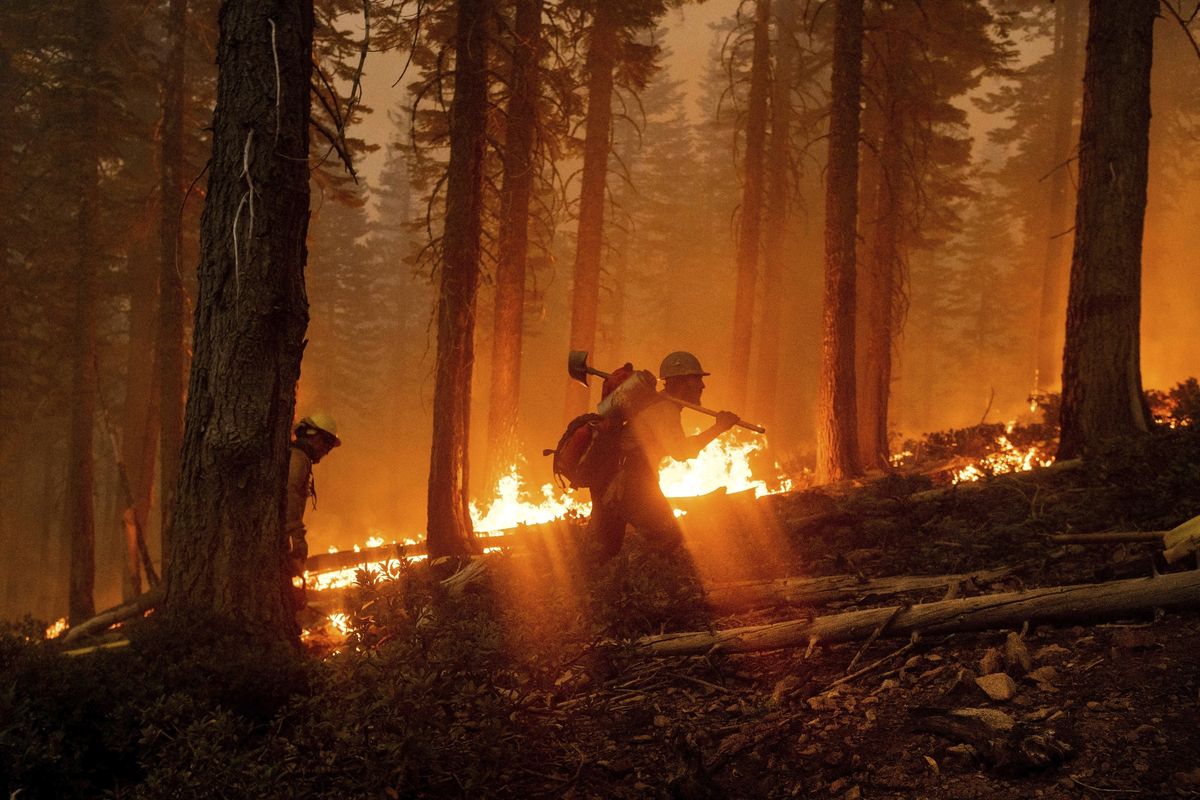Scorched California faces more hot, dry and windy weather

LOS ANGELES – Rain showers fell Thursday on the northwestern edges of fire-ravaged California but forecasters warned residents to not be fooled: A new round of hot, dry and windy weather is expected by the weekend.
“Ideally this would be a signal for a change in the upcoming weather pattern but it unfortunately looks like a head fake in the wrong direction,” the National Weather Service’s San Francisco Bay Area office wrote.
Another front expected Friday will bring needed rain to lingering fire areas in Oregon, Washington and Idaho, but will only slightly delay the development of high pressure that sends air flowing along the surface from the interior toward the coast, forecasters said.
The withering northerly and easterly winds are common in the fall and historically signaled the arrival of fire season in California, but the Golden State has already seen more than 8,000 wildfires scorch 5,600 square miles (14,504 square kilometers) this year.
“We’ve already had three fire seasons in one year,” said Lynne Tolmachoff, spokeswoman for the California Department of Forestry and Fire Protection, or Cal Fire.
Most of the loss has occurred since Aug. 15, when remnants of Tropical Storm Fausto off Mexico surged up the coast and unleashed thousands of dry lightning strikes that ignited massive complexes of multiple fires around the San Francisco Bay Area.
Those and subsequent conflagrations in the Sierra Nevada and elsewhere have left 26 people dead and destroyed more than 6,700 homes and other structures, according to Cal Fire.
Forecasts called for fire weather watches to go into effect in Northern California from Saturday morning to Monday morning. Watches were not yet issued for the southern half of the state, but forecasters said it would be hot, dry and windy.
The potential for new fires comes with more than 18,000 firefighters already on the lines of 26 major wildfires.
Firefighters are supposed to get 48 hours off after 21 days of work, but that’s not much of a break for firefighters who live in one part of the state and are on a fire in another part.
“It’s not like you’re going to be able to go home and relax, spend some time with family and come back,” said Tolmachoff.
Pacific Gas & Electric, meanwhile, was tracking the potential for the dry northerly winds to determine if it would be necessary to shut off power to areas where gusts could damage equipment or hurl debris into lines and ignite flammable vegetation.
The utility posted a Public Safety Power Shutoff “watch alert” for Saturday evening through Monday morning.
“Strongest winds are expected during the overnight and morning hours Saturday and Sunday in the northern Sierra foothills where gusts in excess of 45 mph are possible,” PG&E said. The company noted that the strength, timing and location of the event could change.
The power shutoff “watch alert,” part of a new initiative to better inform customers, is posted two days before the event and will be followed by a “warning alert” four to 12 hours before electricity is cut.
When a wind event was predicted earlier this month, PG&E cut power to about 167,000 homes and businesses in central and northern parts of the state in a more targeted approach after being criticized last year for acting too broadly when it blacked out 2 million customers to prevent fires. Lines that are shut down must be inspected before being re-energized, and the utility is working to speed up that process, too.
PG&E equipment has sparked past large wildfires, including the 2018 fire that destroyed much of the Sierra foothills town of Paradise and killed 85 people. The utility pleaded guilty in June to 84 of the deaths. The utility paid $25.5 billion in settlements to cover the losses from power line-sparked catastrophes.